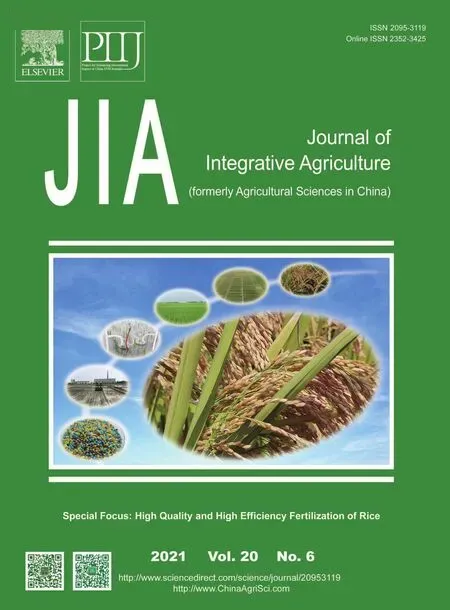Do cooperatives participation and technology adoption improve farmers’ welfare in China? A joint analysis accounting for selection bias
2021-05-23YANGDanZHANGHuiweiLIUZiminZENGQiao
YANG Dan,ZHANG Hui-wei,LIU Zi-min,ZENG Qiao
1 College of Economics and Management,Southwest University,Chongqing 400716,P.R.China
2 School of Business,Chongqing College of Humanities,Science and Technology,Chongqing 401524,P.R.China
Abstract This study examines the impact of farmers’ cooperatives participation and technology adoption on their economic welfare in China. A double selectivity model (DSM) is applied to correct for sample selection bias stemming from both observed and unobserved factors,and a propensity score matching (PSM) method is applied to calculate the agricultural income difference with counter factual analysis using survey data from 396 farmers in 15 provinces in China. The findings indicate that farmers who join farmer cooperatives and adopt agricultural technology can increase agricultural income by 2.77 and 2.35%,respectively,compared with those non-participants and non-adopters. Interestingly,the effect on agricultural income is found to be more significant for the low-income farmers than the high-income ones,with income increasing 5.45 and 4.51% when participating in farmer cooperatives and adopting agricultural technology,respectively.Our findings highlight the positive role of farmer cooperatives and agricultural technology in promoting farmers’ economic welfare. Based on the findings,government policy implications are also discussed.
Keywords:cooperatives,double selectivity model,propensity score matching,sample selection bias,technology adoption,welfare improvement
1.Introduction
Income increase and poverty reduction are important issues of farmers’ economic welfare improvement. It is especially true for China,a country with more than 800 million farmers. Over the past few decades,China has lifted millions of people out of poverty,the majority of whom are farmers. While many factors may have led to China’s success in poverty reduction,researchers and policy makers suggest that the farmer cooperatives,an important organizational form in rural area,and agricultural technology,an important mean of improving agricultural productivity,are two important ways of increasing farmers’ income and reducing poverty (Khanna 2001;Subramanian and Qaim 2010;Vandeplaset al.2013;Ma and Abdulai 2016;Nakanoet al.2018).
Literature focused on the impact of farmer cooperatives and agricultural technology on small-scale farmers’welfare. They found that farmer cooperatives could help small-scale farmers improve their bargaining power(Cakir and Balagtas 2012),reduce the transaction costs and information asymmetry (Liuet al.2019) and improve the level of specialization (Yang and Liu 2012a). In this regard,farmers could take advantage of the cooperatives to increase income (Yang and Liu 2012b;Ma and Abdulai 2016) and reduce poverty (Bernard and Spielman 2009).They also found that agricultural technology could improve farmers’ welfare (Becerril and Abdulai 2010).It has been argued that agricultural technology mainly increases agricultural production by increasing agricultural productivity,thereby directly or indirectly increasing farmers’ agricultural income (Khanna 2001;Nakanoet al.2018). New agricultural technologies could directly impact farmers’ income through productivity gains (Subramanian and Qaim 2010;Nakanoet al.2018). Indirect benefits also could be generated when technology adopters pass on the benefits from productivity improvement to others,such as by lowering food prices,promoting the growth of non-farm sectors,and stimulating the transition from lowproductivity subsistence agriculture to high-productivity agro-industrial economies (Just and Zilberman 1988).Agricultural technology adoption could also indirectly reduce poverty by increasing non-farm employment opportunities for low-income farmers and increasing the consumption level of all farmers (de Janvry and Sadoulet 2001;Becerril and Abdulai 2010).
Overall,present literature focused on the impact of cooperatives participation and technology adoption on farmers’ income and poverty status. However,there is no unified analysis framework to analyze the impact of farmer cooperatives,and farmers’ technology adoption on their economic welfare simultaneously. Moreover,the impact of the possible connection between farm cooperatives and technology adoption on farmers’economic welfare has not been examined. This paper aims to assess the impact of rural organization institution and technology adoption on farmers’ economic welfare.Pigou (1920) pioneered the study of welfare economics and distinguished between economic and non-economic welfare. Then Sen (1970) put forward the theory of functional and capacity welfare,using human freedom and decision-making ability rather than wealth to measure the quality of life,which promoted welfare research into a new stage. This paper focuses on the economic welfare of farmers measured by their agricultural income. Based on micro-survey data from 15 provinces in China,the double selectivity model(DSM) that corrects for sample selection bias was used to analyze the joint impact of farmer cooperatives participation and adoption of cost-reducing agricultural technology on farmers’ agricultural income. We then used the propensity score matching (PSM) method to calculate the income difference as a result of farmers’decisions on cooperatives participation and technology adoption.Counter factual analysis was adopted in this study to calculate to which extent these decisions could improve the agricultural income,with a particular focus on low-income farmers.
It should be noted that due to the diversity of agricultural technologies,there are diverse mechanisms through which the technologies impact farmers’ economic welfare. In China,rapid increase in agricultural production costs is becoming an important reason for its weakened international competitiveness in the agricultural sector.Many scholars pointed out that the key solution to high agricultural production costs is adopting agricultural technologies. In other words,agricultural technology is an important approach to help farmers reduce agricultural production cost and increase agricultural production efficiency. Agricultural machinery technology is an important type of cost-reducing and efficiency-enhancing agricultural technologies (Hayami and Ruttan 1971)because it can effectively reduce labor input. Therefore,this paper focuses on the use of agricultural machinery that represents cost-reducing agricultural technologies.
We make the following contributions through our research:First,we built a unified analytical framework to analyze the joint impact of farmers’ participation in farm cooperatives (cooperatives participation,hereafter)and adoption of cost-reducing agricultural technology(technology adoption,hereafter) on their agricultural income. Second,we adopted new analytical tools (DSM and PSM) that correct for the selection bias of farmers’decisions so as to obtain reliable empirical results. Third,we examined the impact of social capital on farmers’decisions.
2.Empirical specification
DSM is suitable for empirical analysis of this paper based on following reasons. First,DSM can properly reduce endogenous selection bias caused by both unobserved and observed factors (Tunali 1986). The bias can occur when farmers’ decisions on cooperatives participation and technology adoption come from their heterogeneous choices without considering different information they use to make decisions,which leads to inconsistent estimation results (Heckman and Vytlacil 2007). Second,DSM can estimate two endogenous selection models simultaneously. The two decisions are highly correlated as farmer cooperatives are important platforms for agricultural technology extension,such as supplying agricultural machinery technology services (Abebaw and Haile 2013;Maet al.2017). It is necessary to use DSM to address the endogenous bias of two choices at the same time.
DSM has two steps. First,a bivariate Probit model was used to study farmers’ two decisions and calculate the inverse mills ratio. Second,an OLS estimation method was used to study the relationship between the outcome variable and a series of explanatory variables when the selective correction terms-inverse mills ratios were added to the equation.
Letycandyncrepresent the expected benefits of cooperatives participation and non-participation,respectively. Ifyc *=yc –ync>0,farmers will join farmer cooperatives. Letytandyntrepresent the expected benefits of technology adoption and non-adoption,respectively. Ifyt *=yt –ynt>0,farmers will adopt the technology. The net benefitsyc *andyt *of a farmer are the latent variables. Set

Whereεcandεtare random errors distributed normally with mean equal to zero and variance equal to one.When farmers’ two decisions are affected by unobserved factors,the random factors affecting these two decisions are not independent,thenCOV(εc,εt)=ρ.
Because the net benefitsyc *andyt *are latent variables which are unobserved,the observed choices of the farmers are:

Among them,Dcis farmers’ decision on cooperatives participation,andDtis farmers’ decision on technology adoption. The two decisions lead to four outcomes,and the farmers in the full sample can be divided into four subsamples.
The corresponding probabilityP00,P01,P10,andP11of the four sub-samples can be expressed as:
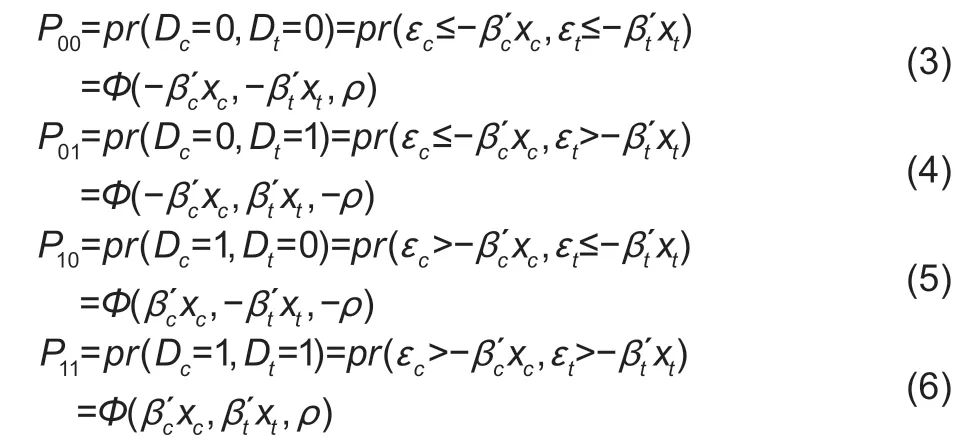
WhereΦdenotes the cumulative distribution function of the standard bivariate normal distribution with the correlation coefficient ±ρ. In the first step of the Bivariate Probit model estimation of DSM,the following likelihood function can be obtained:

Maximizing this likelihood function will yield consistent estimation of. Among them,using the results estimated by the Bivariate Probit model,the inverse Mills ratiosare estimated. The agricultural income equation that corrects for selection bias is:

3.Data and descriptive statistics
3.1.Data source
Data for this research were collected through a survey of farmers and cooperatives from 15 provinces in China.In order to ensure the reliability of the survey data,the research team conducted three pilot surveys in Chongqing City in June 2013 and finalized the final questionnaire after several rounds of revisions. The formal investigation began in July 2013. The survey adopted a stratified sampling method by first randomly selecting 4–6 provinces/municipalities in eastern,central and western China,then choosing 1–3 cities/counties in each province,and lastly selecting 3–4 farmer cooperatives in each county. This survey used a door-to-door interview method and a standard questionnaire. Survey participants included leaders of the farmer cooperatives and household heads of 5–10 farm households in each village. Farm households included those who were members of farmer cooperatives and who were not. The total survey sample covered 33 cities or counties in 15 provinces or municipalities. The respondents presented their answers to trained investigators,who then filled out the questionnaires. The leader and core members of the research team then checked each returned questionnaire and revisited some respondents to ensure data accuracy and validity. A total of 478 valid samples were obtained,including 396 farmers and 82 cooperatives leaders.Table 1 provides the sample distribution.
The two decisions of farmers form four subsamples:farmers who participated in farmer cooperatives and adopted agricultural technologies,farmers who participated in cooperatives but did not adopt agricultural technologies,farmers who did not participate in cooperatives but adopted agricultural technologies,and farmers who did neither. Table 2 summarizes the descriptive statistics of the four groups. Allowing the categorization of four farmer groups,the survey data meet the needs of this research and are more practicallyfeasible for the cooperatives research than most of the previous micro survey data focusing only on the cooperatives members. In addition,there is detailed information about the four farmer groups and their related farmer cooperatives,providing comprehensive information for analyzing the four situations as a result of farmers’ two decisions.

Table 1 Sample distribution

Table 2 Distribution of samples in four groups
3.2.Variable definition and descriptive statistics
The main dependent variable used in this study is agricultural income,and the core independent variables are two decisions by farmers -whether to participate in cooperatives and whether to adopt cost-reducing agricultural technologies. Since farmers’ two decisions may lead to selection bias,we used a range of variables to explain these two decisions. A major factor influencing the decisions is social capital (Foster and Rosenzweig 1995;Matuschke and Qaim 2009). We also controlled for other factors impacting the decisions. Then we used variables such as agricultural input,farmers’ household and location characteristics to explain agricultural income(Khanna 2001;Yang and Liu 2012b;Abebaw and Haile 2013;Ma and Abdulai 2016;Liuet al.2019).
This paper measures social capital from three aspects according to current literature:social network,social trust and social participation (Putnamet al.1994;Foster and Rosenzweig 1995;Ward and Pede 2015). Social network describes relatively stable social relationships among individual members of a particular society,which often refers to the size of social network and the frequency of communication among members (Foster and Rosenzweig 1995). This paper uses Chinese Communist Party membership of the household head,agricultural product sales range,and the degree of cooperation among farmers as the proxy variables of social network of farmers. Social trust is a manifestation of trust among members of social networks (Putnamet al.1994).This paper uses the government’s support for farmer cooperatives,the average education level in the village,and whether farmers purchase agricultural insurance as proxy variables for social trust. Social participation is an important way for individuals to participate in social networks and obtain access to scarce resources. This paper uses farmer’s agricultural training,agricultural skill,and use of agricultural information services as proxy variables for social participation. The specific definitions and statistical descriptions of the variables are presented in Table 3.
4.Results
4.1.Effect of farmers’ decisions on income growth
Determinants of farmers’ two decisionsThe marginal effects of the first stage regression results of DSM with the full sample are presented in Table 4. The results reveal the factors that influence farmers’ two decisions.
As shown in Table 4,there is a strong correlation between the two decisions,with a coefficientρat 0.299 significant at the level of 1%. Specifically,the unobserved factors that affect cooperatives participation increase the possibility of technology adoption.
In addition,Table 4 shows the independent variables that have a statistical significant impact on the two decisions. Specifically,village average education level which represents social trust has a significantly positive impact on cooperatives participation. This may be because farmers with higher education level can more easily form a consensus and generate trust with each other than those with lower education level. Receiving agricultural training which represents social participation also has a significantly positive impact on cooperatives participation,because the trainings inform farmers the benefits of farmer cooperatives (Fulton and Adamowicz 1993). Receiving agricultural information service,another indicator of social participation,also has a significantly positive impact on cooperatives participation. Farmers’cooperatives participation is also affected by their household characteristics and location characteristics.
The estimates of the impact of various factors onfarmers’ technology adoption are also presented in Table 4. Social capital,including social network,social trust and social participation,is an important factor affecting technology adoption. The social network measured by the sales range of agricultural products has a significantly positive effect on technology adoption,which is consistent with existing literature (Maertens and Barrett 2012). This may be because the wider the sales range of agricultural products,the stronger the market competition is,which motivates farmers to enhance their product competitiveness by adopting cost-reducing agricultural technologies. Social trust measured by the village education level has a significantly positive impact on technology adoption,which is consistent with previous studies (Freudenreich and Mußhoff 2018). This may be because the higher the village education level,the stronger the ability of farmers to accept and master new agricultural technology. Agricultural insurance is an effective risk management tool,which can help farmers reduce risks when adopting new technologies (Zhanget al.2019;Zhuoet al.2020). Social participation measured by farmers’ agricultural skills has a significantly positive effect on technology adoption. Farmers’household characteristics also have an impact on technology adoption.
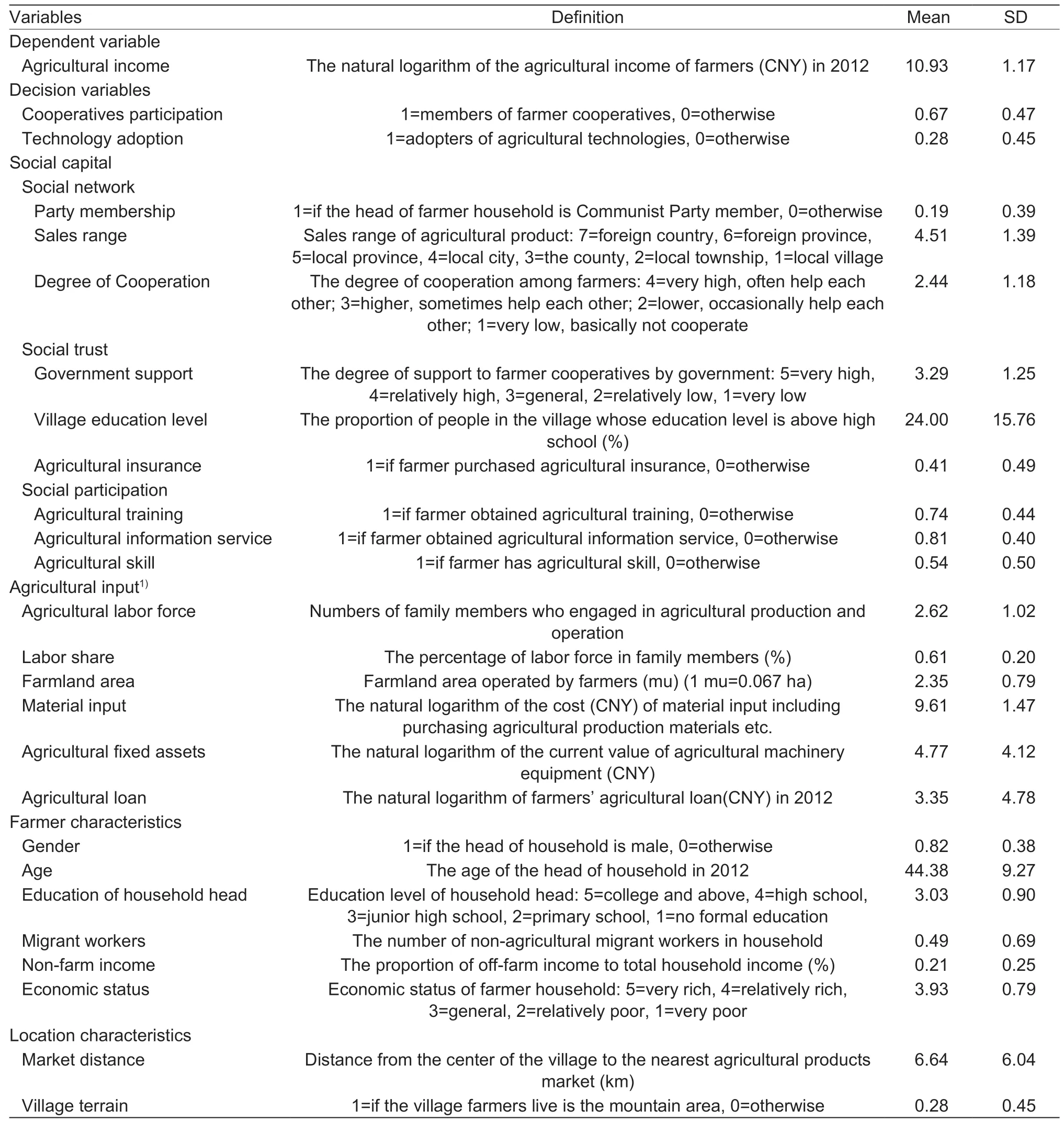
Table 3 Definition of variables and summary statistics
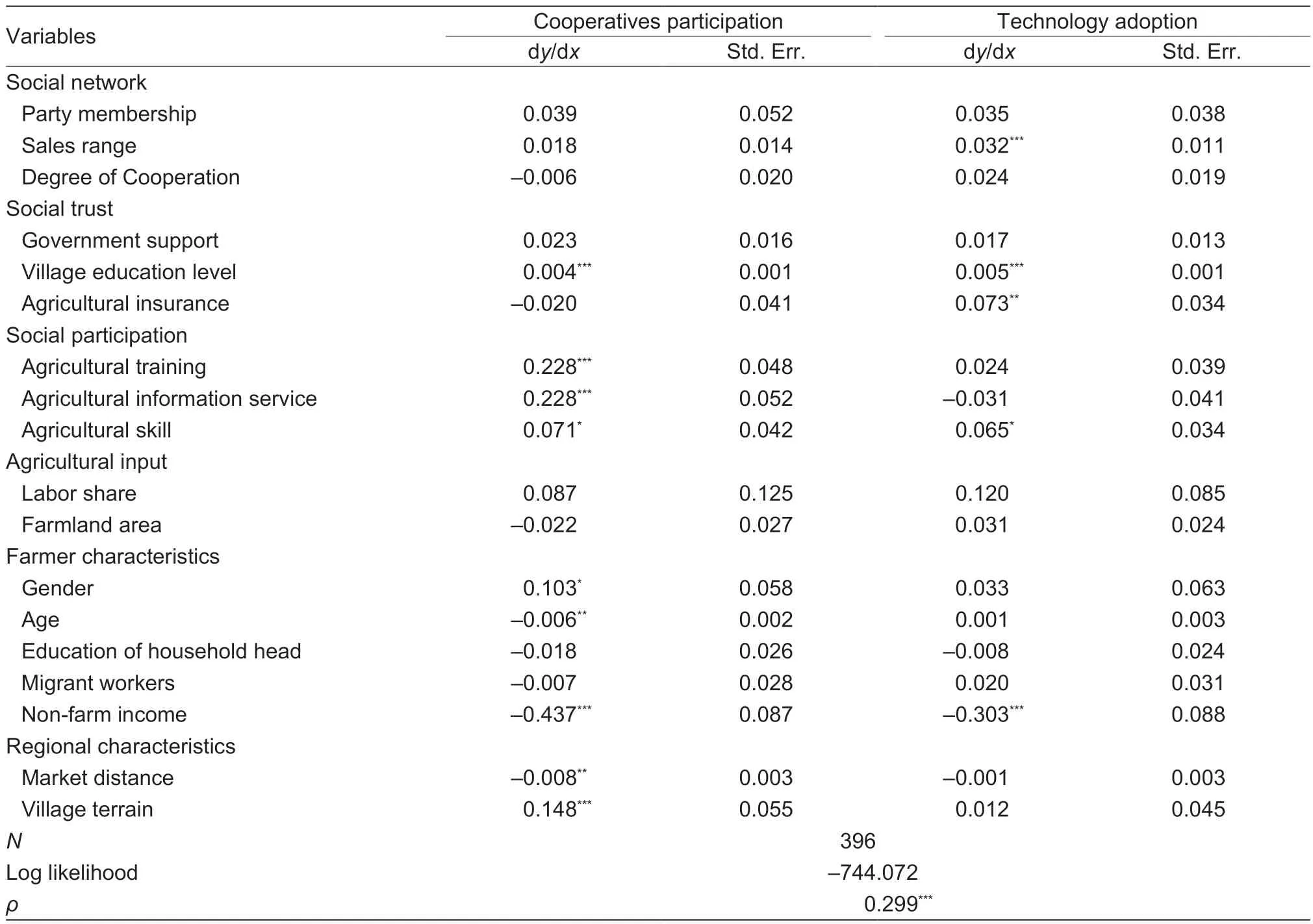
Table 4 Marginal effects of the first-stage regression results of double selectivity model (DSM) with the full sample
The impact of farmers’ decisions on agricultural incomeTable 5 presents the results of the second stage regression of DSM,which are the influences of farmers’decisions (cooperatives participation and technology adoption) on their agricultural income,by controlling for other influencing factors.
Table 5 indicate that farmers’ both decisions have significantly positive impact on their agricultural income after controlling selection bias caused by observed and unobserved factors,which is consistent with current literature (Subramanian and Qaim 2010;Yang and Liu 2012b;Nakanoet al.2018).
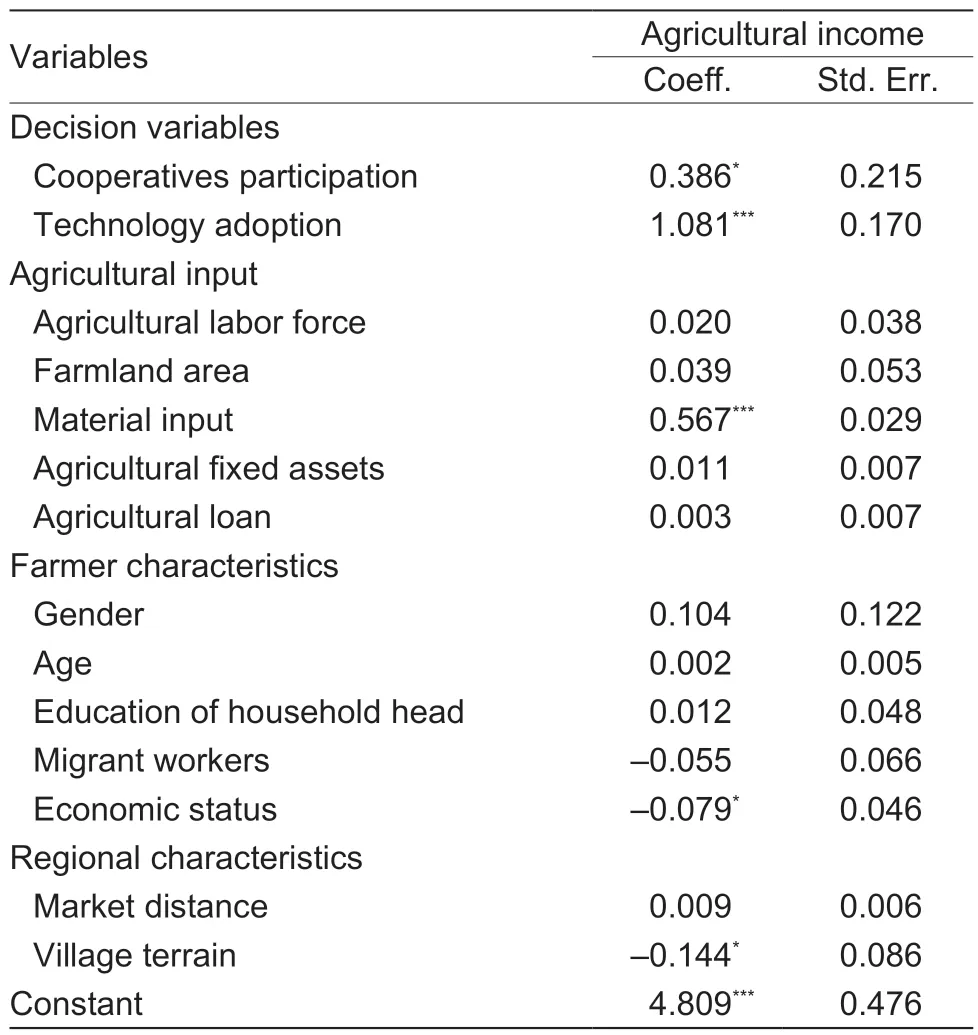
Table 5 The second stage regression results of double selectivity model (DSM) with the full sample
In addition,we identified important impacts of the control factors on farmers’ agricultural income. First,agricultural material inputs have a significant impact on farmers’ agricultural income. Agricultural labor input,farmland area,agricultural fixed asset and agricultural loans all have positive effects on farmers’ agricultural income,though the effect is not statistically significant.Family economic status has a significantly negative impact on farmers’ agricultural income. The possible reason is that with the development of China’s non-agricultural economy,the proportion of off-farm income in farmers’total income increases,and farmers with better economic status are less dependent on income from agriculture (de Janvry and Sadoulet 2001;Liuet al.2019). Village terrain has a significantly negative impact on agricultural income.The possible reason is that inconvenient transportation in mountainous villages increases the transportation cost,and then reduces the agricultural income.
Income effect of farmers’ decisionsTable 6 reports the estimated results of ATT obtained by three different matching methods:NNM,KBM and RM (Appendix A for the first stage of PSM). In addition,we conducted sensitivity tests for the PSM estimation to check the robustness of the results and reported the critical level of hidden bias at the last column of Table 6.
Table 6 indicates that three different matching methods obtained consistent results,showing that agricultural income of farmers who joined cooperatives and adopted agricultural technologies increased significantly. To be specific,when NNM,KBM and RM were used,agricultural income of cooperatives members increased by about 2.73,2.72 and 2.87%,respectively,compared with nonmembers. The average agricultural income improvement is 2.77% with the three matching methods. Compared with non-adopters,agricultural income of adopters increased by 2.77,2.11 and 2.18%,respectively,with an average of 2.35% increase. In addition,cooperatives participation can significantly increase agricultural income with the full sample,which is not sensitive to unobserved factors or hidden biases. If the difference of odds between two farmers with the same covariates participating cooperatives is 35%,the estimated ATT for farmers participating in cooperatives is implausible. The lowest and highest critical value of Γ is 1.35–1.4 and 1.45–1.5,respectively. Technology adoption can significantly increase agricultural income with the full sample,which is not sensitive to unobserved factors or hidden biases.If the difference of odds between two farmers with the same covariates adopting agricultural technologies is 25%,the estimated ATT for farmers adopting agricultural technologies is implausible. The minimum and maximum critical value of Γ is 1.25–1.3 and 1.35–1.4,respectively.The value is relatively high since we controlled several covariates that influence the two decisions.
In order to evaluate the reliability of above results from the PSM method,we carried out a balance test to test the conditional independence assumption (CIA)and a common support test to test the common support condition (Appendix B). Both the balance test and common support test support the reliability of the PSM results.
4.2.Effect of low-income farmers’ decisions on poverty reduction
Determinants of low-income farmers’ decisionsIn order to analyze the poverty reduction effect of farmers’decisions on cooperatives participation and technology adoption,this paper conducted an empirical analysis on low-income farmers and a heterogeneity analysis that compared the results between the low-income sample and the full sample. To identify low-income farmers in this study,we first calculated per capita net income of the full sample in 2012,and then classified the households who earned less than 7 918 CNY per year,the average per capita net income of rural residents in China in 2012 according toChina Statistical Yearbook,as low-income farmers.

Table 6 Average treatment effects and results of sensitivity analysis with the full sample
For low-income farmers,we also used DSM to analyze the impact of their two decisions on their agricultural income while eliminating the selection bias. Table 7 provides the marginal effects of the first-stage regression results of DSM with the low-income sample. The two decisions of low-income farmers are highly correlated with coefficientρat 0.412 significant at the 1% level. This is higher than that of the full sample (0.299),indicating that cooperatives participation and technology adoption have a more important role in low-income farmers’agricultural income and welfare than for the full sample.The unobserved factors that affect farmers’ cooperatives participation also increase technology adoption.
Comparing with the analysis results of the full sample,most of the independent variables have the same influence on low-income farmers’ two decisions,but with different degree of influence. On the one hand,social capital has a greater impact on low-income farmers’ two decisions than those of the full sample. For instance,social trust represented by government support and social participation represented by agricultural training and agricultural information service have significantly positive effects on low-income farmers’ cooperatives participation. Social network represented by degree of cooperation and social trust represented by government support and village education level have a significantly positive impact on low-income farmers’ technology adoption. The corresponding coefficients are larger than those in the full sample. On the other hand,farmers’household characteristics and regional characteristics have a smaller influence on the decisions of low-income farmers than on those of the full sample.
The impact of low-income farmers’ decisions on their agricultural incomeTable 8 provides the results of the second stage regression of DSM for low-income farmers.Table 8 reveals that low-income farmers’ two decisions have a significant positive impact on their agricultural income at the 1% level,which is consistent with current literature (Verhofstadt and Maertens 2014).
Other factors also have significant impacts on low income farmers’ agricultural income. For instance,the material input can significantly increase their income.Since low-income farmers have limited resource endowments,the material input has higher positive effect on their agricultural income than that of the full sample. Having a male household head also significantlyincreases their agricultural income.
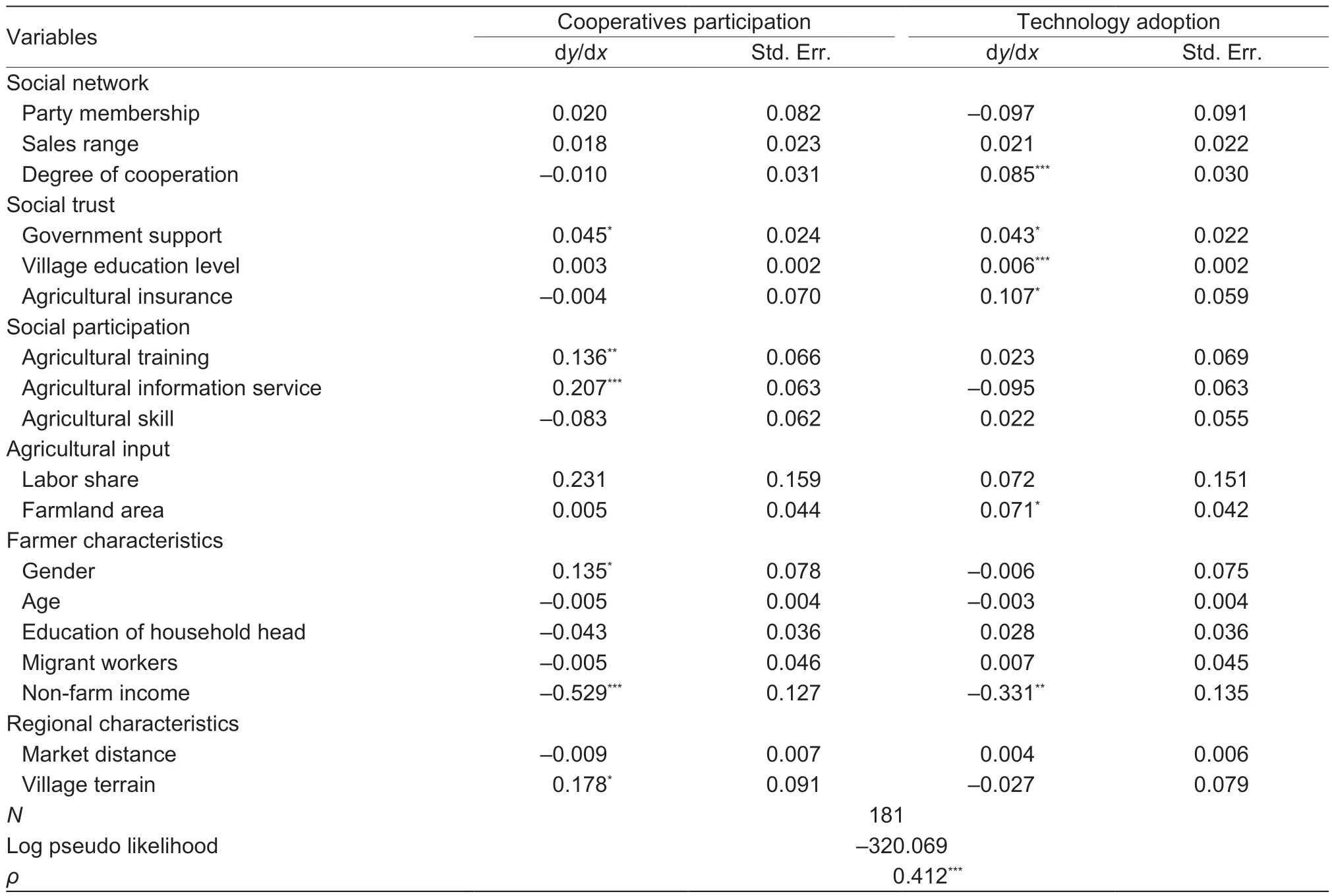
Table 7 Marginal effects of the first-stage regression results of DSM with low-income farmers
Poverty reduction effect of low-income farmers’decisionsPSM was used to estimate the impact of lowincome farmers’ two decisions on their welfare. Similar to the analysis for the full sample,we first estimated the propensity score through the Logit model (Appendix C),and then calculated ATT through PSM. Table 9 presents the ATT estimation results for low-income farmers obtained by three matching methods:NNM,KBM and RM.The results are consistent,indicating that low-income farmers’ decisions on cooperatives participation and technology adoption have a significantly positive impact on their agricultural income,which is consistent with the full sample result. In addition,the critical level of hidden bias for robustness check is presented in the last column of Table 9.
Agricultural income of low-income farmers who arecooperatives members is about 5.75,5.53 and 5.07%higher as measured by NNM,KBM and RM,respectively,than that of low-income farmers who are not members.The average agricultural income improvement of 5.45%is higher than that of the full sample (2.77%). The results for technology adoption are very similar,indicating that low income farmers joining the cooperatives experience a higher income improvement effect. Meanwhile,agricultural income of low-income farmers adopting agricultural technologies is 4.70,4.48 and 4.36% higher obtained by the three matching methods,respectively,than that of low-income non-adopters. The average agricultural income improvement is 4.51%,which is higher than that of the full sample (2.35%). In this regard,new technology adoption has the potential to help poor farmers more and contribute to poverty reduction. In addition,the results are not sensitive to unobserved factors or hidden biases. If the difference of odds between two farmers with the same covariates participating cooperatives is 55%,the estimated ATT for farmers participating in cooperatives is implausible. The minimum and maximum critical value of Γ is 1.55–1.6 and 1.9–1.95,respectively.The result regarding technology adoption for low-income farmers is not sensitive to unobserved factors or hidden biases. If the difference of odds between two farmers with the same covariates adopting agricultural technologies is 30%,the estimated ATT for adopters is implausible. The minimum and maximum critical value of Γ is 1.3–1.35 and 1.35–1.4,respectively. The value is relatively high since we controlled several covariates that influence farmers’decisions on cooperatives participation and technology adoption.
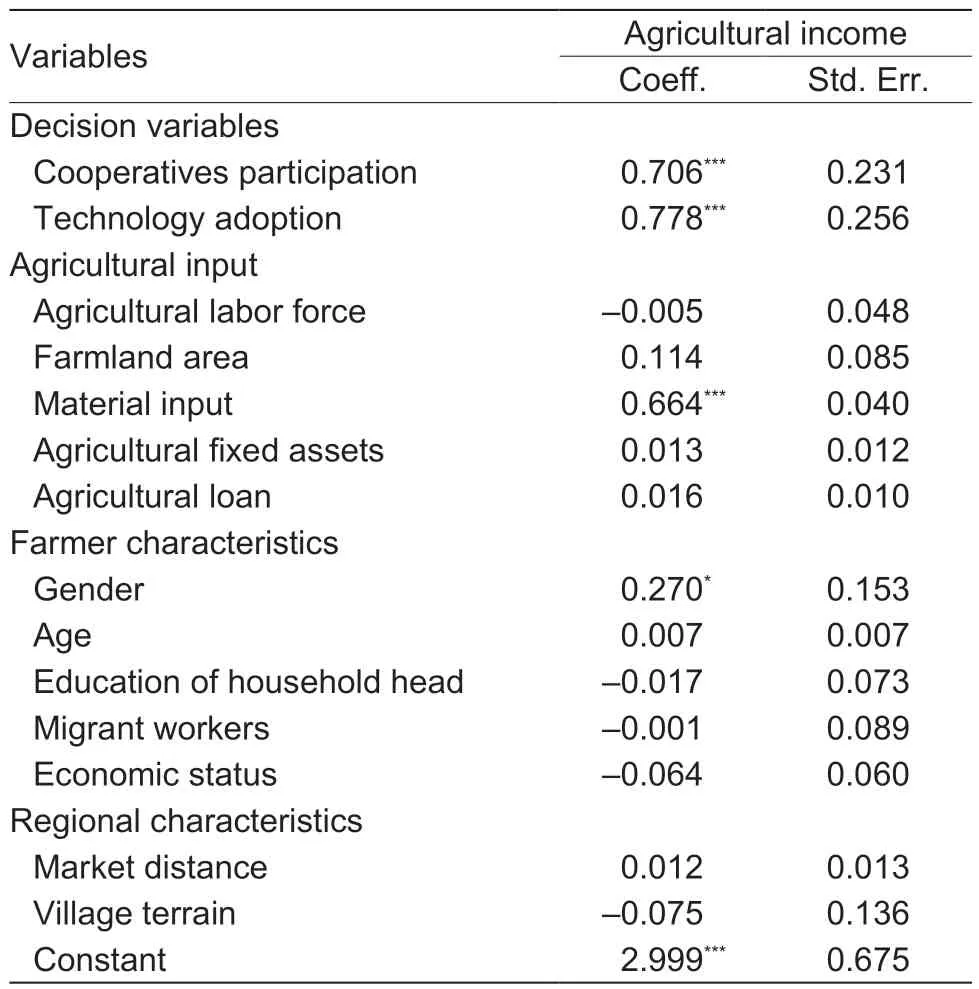
Table 8 The second stage regression results of DSM with low-income farmers
The balance test (Appendix D) based on KBM indicates that the balance requirements are fully satisfied.The distribution of propensity matching scores for lowincome farmers reveals that by comparing the overlap of the treatment group and the control group,the common support test is satisfied.

Table 9 Average treatment effects and results of sensitivity analysis for the low-income sample
5.Conclusion and policy recommendations
This paper employed DSM and PSM to analyze farmer survey data from 15 provinces in China in order to understand the impact of farmers’ decisions of cooperatives participation and technology adoption on their agricultural income. The PSM method was further used to correct for farmers’ selection bias caused by observed factors and calculate the difference of agricultural income under different decisions with a counter-factual analysis. The balance test and sensitivity analysis were employed for robustness checks. We summarize our findings below.
First,cooperatives participation can significantly improve farmers’ agricultural income and welfare,especially for the low-income farmers,after controlling for farmers’ heterogeneous selection bias. Cooperatives participation has a stronger positive impact on income in the low-income sample than in the full sample,which implies that joining farmer cooperatives has the potential to reduce poverty.
Second,technology adoption can also significantly improve farmers’ agricultural income and welfare,especially for the low-income farmers,after controlling for farmers’ heterogeneous selection bias. Moreover,there is a significant correlation between farmers’ decisions on cooperative participation and technology adoption.Technology adoption shows a stronger positive impact on income in the low-income sample than in the full sample,indicating that adopting agricultural technology could contribute to poverty reduction.
Third,farmers’ social capital and other factors are also significantly associated with farmers’ cooperatives participation and agricultural technology adoption decisions. For the full sample,cooperatives participation is significantly and positively associated with social trust and social participation. For low income farmers,cooperatives participation is significantly increased by social trust,and social participation. Other control factors have mixed impacts on cooperatives participation. For the farmers in the full sample,technology adoption is significantly and positively associated with social network,social trust,and social participation. For the low income group,technology adoption is significantly increased by social network,and social trust.
This paper proposes a number of policy implications.For instance,the government should take measures to promote the development of farmer cooperatives especially in low-income areas by further standardizing relevant legislation;and to promote the cost-reducing agricultural technologies,such as to increase the proportion and amount of subsidies for purchasing agricultural machinery;and to strengthen the propaganda of cooperatives to farmers,standardize the operation of cooperatives,and enhance the service capacity of cooperatives to address the problems confronting farmers in the agricultural production and operation process.
Acknowledgements
This study is supported by the Special Project of Major Theoretical Research and Interpretation of Philosophy and Social Sciences of Chongqing Municipal Education Commission,China (19SKZDZX15),the Key Project of Humanities and Social Sciences Research of Chongqing Education Commission,China (18SKSJ003),the Funding for Cultivating Major Projects in Humanities and Social Sciences of Southwest University,China (SWU1809009).
Declaration of competing interest
The authors declare that they have no conflict of interest.
Appendicesassociated with this paper are available on http://www.ChinaAgriSci.com/V2/En/appendix.htm
杂志排行
Journal of Integrative Agriculture的其它文章
- Low glycemic index:The next target for rice production in China?
- Impacts of household income on beef at-home consumption:Evidence from urban China
- The water-saving potential of using micro-sprinkling irrigation for winter wheat production on the North China Plain
- Changes in bacterial community and abundance of functional genes in paddy soil with cry1Ab transgenic rice
- Synergistic effect of Si and K in improving the growth,ion distribution and partitioning of Lolium perenne L.under saline-alkali stress
- Microbial community dynamics during composting of animal manures contaminated with arsenic,copper,and oxytetracycline
